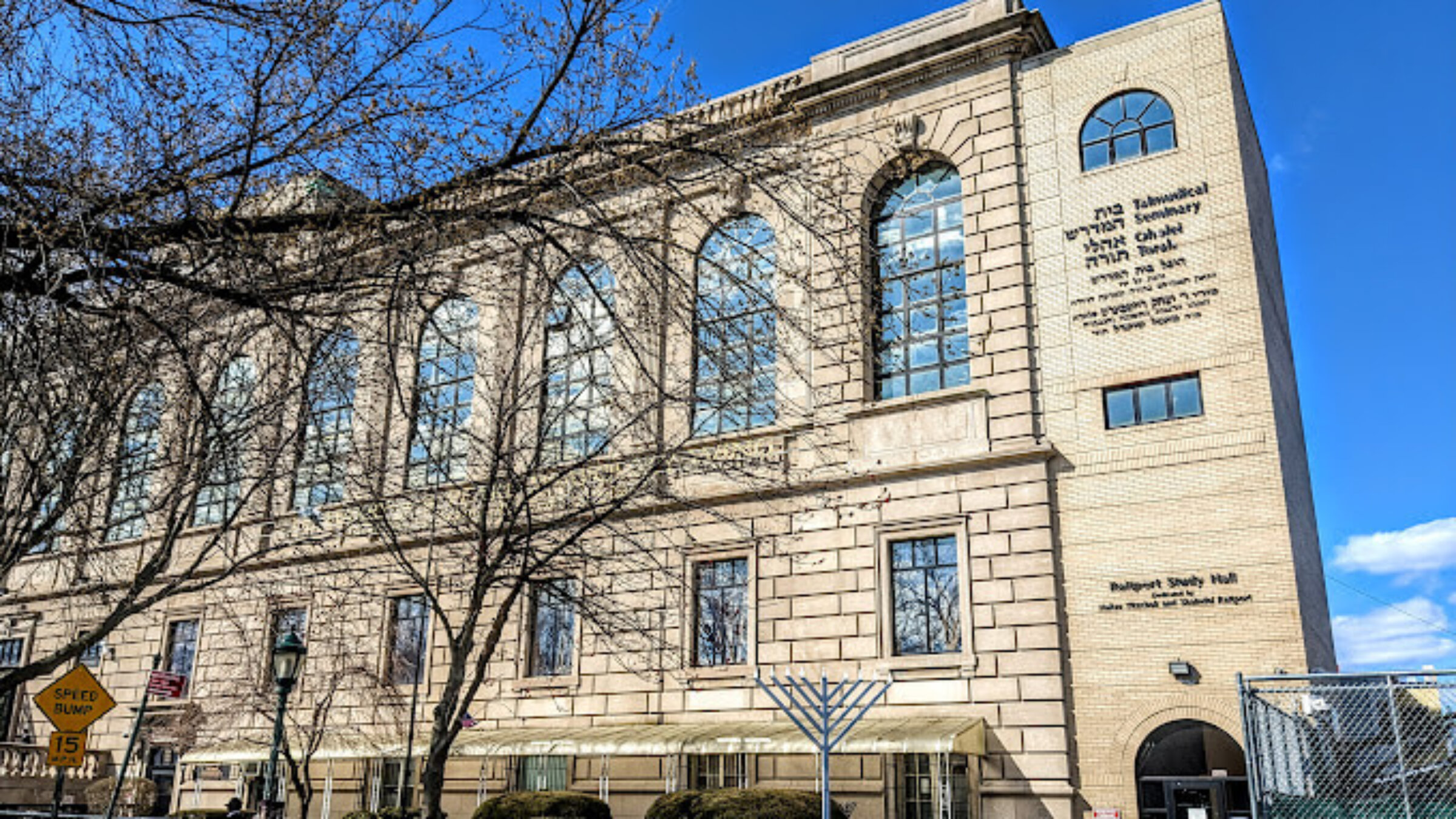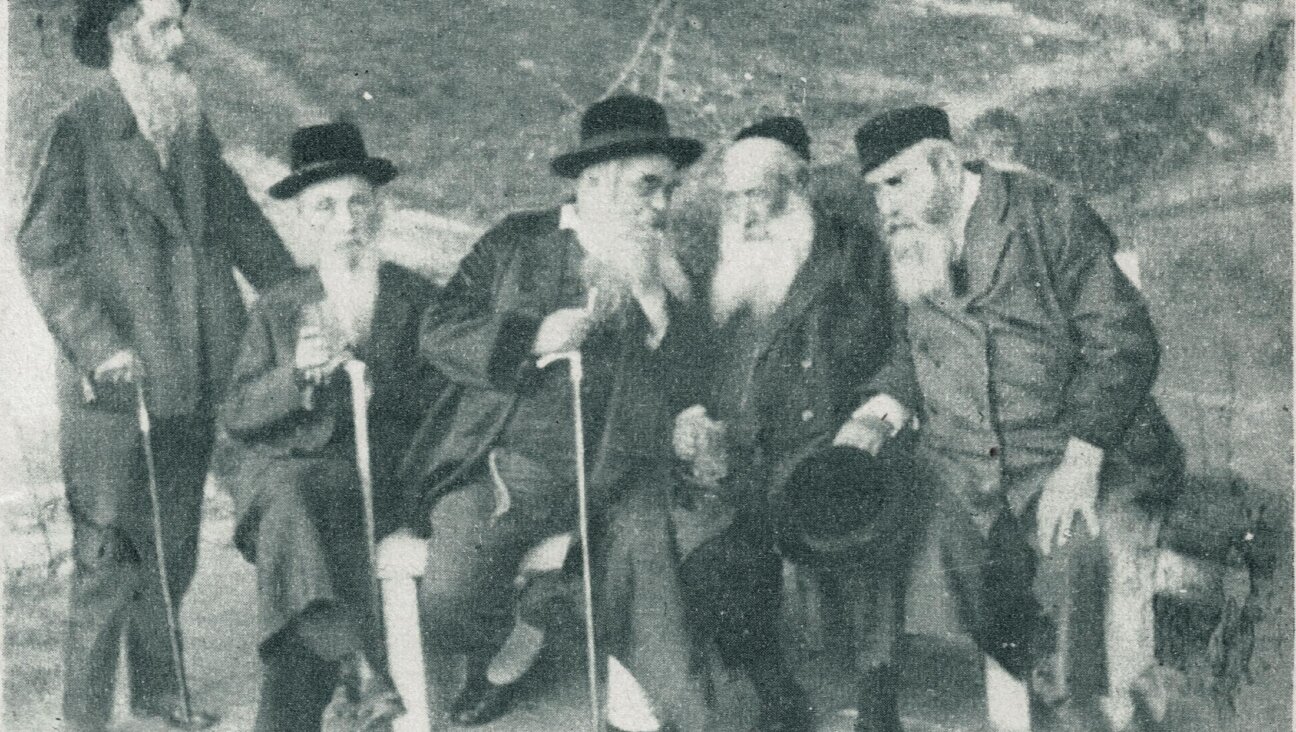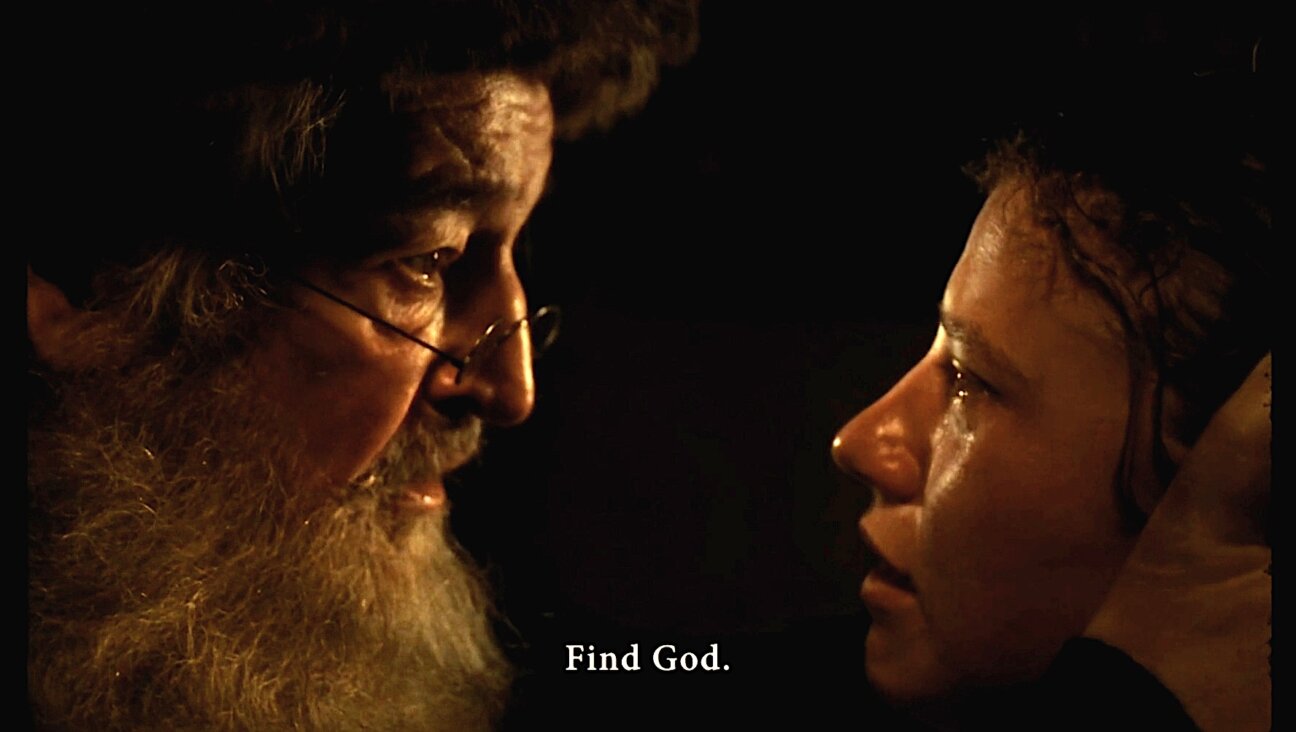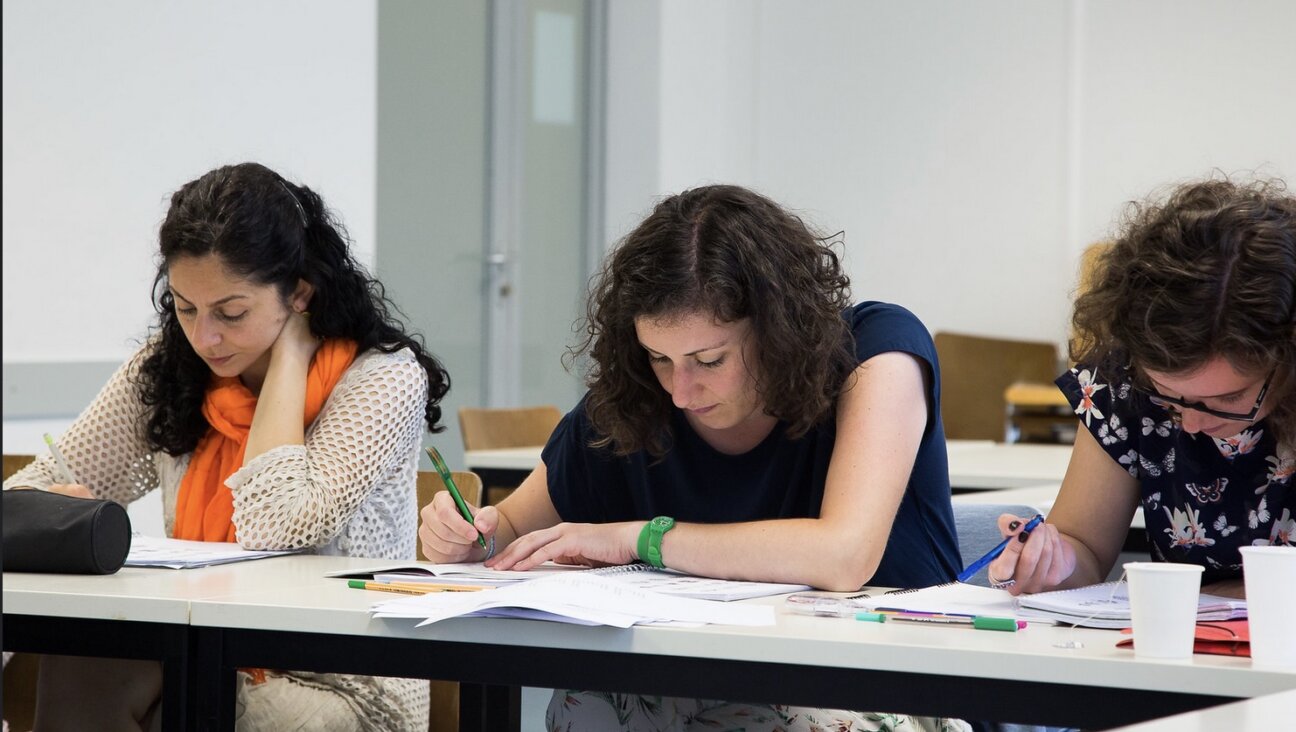I was sure the sun revolved around the Earth. That’s what they taught us in yeshiva.
To get a secular education, my grandmother had to tutor me in basic English and math

Yeshiva Oholei Torah, housed in the former Brooklyn Jewish Center Photo by David Herszenson
My former yeshiva principal, Rabbi Hershel Lustig, recently got some bad news.
According to information I received from YAFFED, an advocacy group dedicated to improving secular education in Haredi Jewish schools, the New York City Department of Education had determined that Lustig’s yeshiva, Tents of Torah (Yeshiva Oholei Torah, in Hebrew) in Brooklyn, New York, wasn’t teaching the required secular curriculum mandated by law. A number of other yeshivas had received similar verdicts.
The 12-page letter Lustig received concluded by stating: “Based on the evidence obtained during this inquiry, and for the reasons stated herein, it is my determination that Yeshiva Oholei Torah is not providing substantially equivalent instruction, as required by Education Law § 3204 and Commissioner’s Regulation Part 130.”
As I read a copy of the letter signed by the Department of Education’s chancellor, David C. Banks, it took me back to my own confusing education as a student at Tents of Torah.
Listen to That Jewish News Show, a smart and thoughtful look at the week in Jewish news from the journalists at the Forward, now available on Apple and Spotify:
The building once housed a large Conservative synagogue
By the time I arrived there in 1986, the grand ballroom was fading, the 2,000-seat sanctuary was dark, and the large pool in the basement was leaking.
It was a shame because the yeshiva was housed in the former impressive Brooklyn Jewish Center, built in the 1920s for the then-astronomical sum of $1 million. The center had been built by Conservative Jews who believed in the American promise. It housed not only a sanctuary and a chapel but also a gym, swimming pool, library and art classrooms. At the time, it was the largest synagogue in Brooklyn.
In 1934, Albert Einstein was the guest of honor at the synagogue’s dedication dinner for the inauguration of the library for Nazi-banned books. The abstract artist Mark Rothko gave art lessons to the center’s young children from 1929 to 1946. Richard Tucker was the cantor from 1944 to 1947. Robert F. Kennedy gave a campaign speech there in 1964.
However, with the shifting demographics of the 1960s and ’70s, the Brooklyn Jewish Center fell on hard times and was eventually purchased by the Chabad movement, and renamed Tents of Torah.
Seeing women wearing praying shawls
Interestingly, part of the agreement to sell the Brooklyn Jewish Center to Tents of Torah included the clause that the original members of the center could congregate there on Sunday morning for shacharis and brunch, as was their custom, as long as they were alive.
Because of this condition, I once made a startling discovery. It was early Sunday morning and I was a first grader on my way to class. As I walked past the chapel, I went over to the door with a window pane shaped like a Star of David and, standing on my tippy-toes, saw a group of elderly men and women standing together at the pews, wearing taleysim (prayer shawls) as they conducted the morning shacharis service. I had never seen women wearing prayer shawls before. I called over a few friends of mine. They, too, were surprised — and bewildered. As I continued walking upstairs to my classroom, it dawned on me that perhaps these elderly Conservative Jews were the real owners of my yeshiva building.
By that time, my parents had become disenchanted with secular Jewish life, and were now observant. They settled in Crown Heights, the headquarters of the Chabad movement, and eventually had nine children. While my five sisters were sent to the local Chabad girls’ school, Beth Rivkah, which had a dual curriculum of Torah and secular studies, my three brothers and I were sent to Tents of Torah, which taught only religious studies.
Secular studies are ‘detrimental to Jews‘
Tents of Torah was established in 1956 by the seventh Chabad Rebbe, Menachem M. Schnersohn, for the express purpose of teaching the Bible, Mishna, Talmud, and Hasidic theology. He felt that the teaching of secular wisdom to young impressionable boys would only serve to contaminate their Jewish souls and minds with ideas foreign and alien to Judaism. In a public address in 1954, the Rebbe said:
“There are people who argue that by teaching children the English language it will help them make a living. In truth, this is misguided. Everything that has a benefit to Jews is written in the Torah. Therefore, if it were beneficial to Jews to learn secular education, the Torah would have ruled that it’s incumbent upon Jews to learn secular studies. However, since the Torah makes no such ruling, it follows that learning secular studies is not only unhelpful, it is also detrimental to Jews.”
The consequence of this conviction led the Rebbe to establish his own school with the stated goal of completely insulating its male students from the outside world. This meant there were no classes on English grammar, math, science, history or social studies. Instead, we studied the intricacies of Jewish law in the Talmud and the complex Chabad theology/philosophy as found in the Tanya, the foundational text of the Chabad Movement.
My grandmother tutored me in English and math
Upon entering Tents of Torah in 1986, I discovered that my paternal grandmother, herself a secular Jew and public high-school math teacher, was vehemently opposed to this school choice as it would deny me a basic secular education. From time to time, she would tutor me on Saturday nights in basic English and math.
When I entered the ninth grade, I began visiting our local public library. One of the books I checked out dealt with basic science for young adults. For the first time, I read that the Earth was 4 billion years old and that it rotated around the sun. Both assertions seemed heretical, as I was taught in Tents of Torah that the Earth was some 5,000 years old and that it was stationary, with the sun revolving around it.
It was common knowledge within the Chabad community that our Rebbe rejected the Copernican Revolution and continued to insist that the Earth was stationary. I was terribly confused and unsure what to believe. I brought my dilemma to my father at the dinner table later that night. He responded by saying that science and religion are both true, but they speak different languages.
Father’s response left me even more confused. The Earth was either some 5,000 years old or 4 billion years old, I reasoned. It couldn’t be both. So, too, with the Copernican Revolution: the Earth either revolved around the sun or it didn’t. It dawned on me that father couldn’t help me with my dilemma.
Did the Torah’s family purity laws stem from non-Jewish tribal taboos?
Around that time, I began venturing down to our home basement to peek into my father’s secular books from his college days. For years, I was aware that father’s treif (unkosher) books were in the basement, piled in a neat row of boxes. He never unpacked them out of fear they might negatively impact the religious education of his four sons. But I was curious. On my lunch break from yeshiva, I began looking through the boxes. One book in particular caught my attention: The Golden Bough, by the cultural anthropologist Sir James George Frazer. What I read there changed me forever.
Frazer recounted numerous sexual taboos from ancient primitive tribes that sounded very similar to the family purity laws I was studying at Tents of Torah. As I flipped through the pages, it occurred to me that maybe some of the laws in the Torah were just another variation of common taboos of that bygone era. If this were the case, in what way were the Torah laws unique to the Jews? This heretical thought frightened me. When I discovered the ancient Law Code of Hammurabi, I was even more confused.
Despite my parent’s best efforts to insulate their sons from secular knowledge and the outside world, it was doomed to fail, since my brothers and I have the same thirst for knowledge as our father had before he became a pious Jew. The Talmud itself proclaims: “If a person tells you there is wisdom among the nations of the world, believe him.”
A message from our Publisher & CEO Rachel Fishman Feddersen

I hope you appreciated this article. Before you go, I’d like to ask you to please support the Forward’s award-winning, nonprofit journalism during this critical time.
At a time when other newsrooms are closing or cutting back, the Forward has removed its paywall and invested additional resources to report on the ground from Israel and around the U.S. on the impact of the war, rising antisemitism and polarized discourse.
Readers like you make it all possible. Support our work by becoming a Forward Member and connect with our journalism and your community.
— Rachel Fishman Feddersen, Publisher and CEO






























